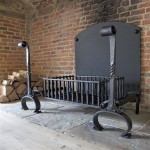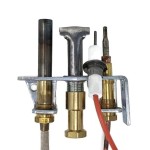Fireplace Replacement Doors: Enhancing Efficiency, Safety, and Aesthetics
Fireplaces, traditionally valued for their warmth and ambiance, can also be significant sources of energy loss and safety concerns if not properly maintained. One effective solution for addressing these issues is the installation of fireplace replacement doors. These doors offer a range of benefits, from improving energy efficiency to enhancing the overall aesthetic appeal of the fireplace. This article will explore the key aspects of fireplace replacement doors, focusing on their advantages, the types available, factors to consider during selection, and installation considerations.
Improving Energy Efficiency and Reducing Heat Loss
An open fireplace, while visually appealing, is often a major contributor to heat loss in a home. The chimney acts as a conduit, allowing warm air to escape and cold air to enter, even when the fireplace is not in use. This phenomenon, known as the stack effect, can significantly increase heating costs. Fireplace replacement doors create an airtight seal, preventing the constant upward draft and minimizing heat loss. By reducing the amount of heated air escaping through the chimney, homeowners can experience a noticeable decrease in their energy bills.
Furthermore, many modern fireplace doors are equipped with features that further enhance their energy efficiency. Some models incorporate tempered glass panels that are specifically designed to radiate heat back into the room, rather than allowing it to escape. These panels often have specialized coatings that reflect infrared radiation, maximizing heat retention and improving the overall heating performance of the fireplace. Investing in an energy-efficient fireplace door is a practical step towards creating a more comfortable and cost-effective home environment.
Beyond reducing heat loss, fireplace doors also assist in preventing drafts from entering the house through the chimney. A constant draft can contribute to temperature fluctuations within the home, making it difficult to maintain a consistent and comfortable indoor climate. By sealing the fireplace opening, fireplace doors effectively block these drafts, resulting in a more stable and energy-efficient home environment.
Enhancing Safety and Preventing Hazards
The open nature of a traditional fireplace presents several potential safety hazards. Sparks and embers can easily escape from the firebox, posing a risk of burns, igniting nearby carpets or furniture, and even causing house fires. Fireplace replacement doors provide a crucial barrier that contains the fire and prevents these hazards from occurring. The doors effectively reduce the risk of accidental burns, especially for children and pets who may be drawn to the warmth of the fire.
Another significant safety benefit of fireplace doors is their ability to prevent the spread of smoke and carbon monoxide into the living space. A properly installed fireplace door creates a tighter seal around the firebox, minimizing the escape of harmful combustion byproducts. This is particularly important in homes with older or poorly maintained chimneys, where the risk of smoke spillage is higher. Carbon monoxide is a colorless, odorless gas that can be deadly, making it essential to take precautions to prevent its accumulation in the home. Fireplace doors, in conjunction with regular chimney inspections and maintenance, contribute to a safer and healthier indoor environment.
Furthermore, fireplace doors can also prevent animals from entering the chimney flue. Birds, squirrels, and other small animals may attempt to nest in the chimney, creating blockages that can impair airflow and increase the risk of chimney fires. Fireplace doors provide a physical barrier that prevents these animals from gaining access to the flue, helping to maintain a clear and safe chimney passage.
Improving Aesthetics and Customization Options
Beyond their functional benefits, fireplace replacement doors offer a significant opportunity to enhance the aesthetic appeal of a fireplace. Available in a wide range of styles, materials, and finishes, these doors can be customized to complement the existing décor of any home. Whether the homeowner prefers a traditional, rustic look or a more modern and contemporary design, there is a fireplace door to suit every taste.
The frame of the fireplace door is a key element in determining its overall aesthetic. Common frame materials include steel, iron, and aluminum, each offering a different look and feel. Steel frames are known for their durability and versatility, while iron frames provide a more classic and robust appearance. Aluminum frames are lightweight and resistant to corrosion, making them a suitable choice for coastal environments. The finish of the frame can also be customized to match the homeowner's preferences, with options ranging from matte black to polished brass and beyond.
The glass panels of the fireplace door also contribute to its aesthetic appeal. Clear glass allows for an unobstructed view of the fire, while tinted or textured glass can add a touch of elegance and sophistication. Some fireplace doors feature decorative designs or etched patterns on the glass, further enhancing their visual interest. The choice of glass depends on the homeowner's personal preferences and the overall style of the room.
In addition to the frame and glass, fireplace doors can also be customized with a variety of accessories, such as handles, latches, and mesh screens. These accessories can further enhance the aesthetic appeal of the door while also providing added functionality. For example, a mesh screen can be used to prevent sparks from escaping, even when the doors are open. The options for customization are virtually endless, allowing homeowners to create a fireplace that is both functional and visually stunning.
Types of Fireplace Replacement Doors
Fireplace replacement doors are available in a variety of styles and configurations, each designed to meet specific needs and preferences. Understanding the different types of doors is essential for making an informed decision.
Overlap Fit Doors: These doors are designed to sit on the face of the fireplace opening, overlapping the surrounding brick or stone. They are a popular choice for their ease of installation and ability to cover minor imperfections around the fireplace opening. Overlap fit doors are typically less expensive than inside fit doors and are a good option for homeowners looking for a cost-effective solution.
Inside Fit Doors: As the name suggests, these doors are designed to fit inside the fireplace opening, creating a flush appearance with the surrounding brick or stone. Inside fit doors require more precise measurements and can be more challenging to install than overlap fit doors. However, they offer a more seamless and integrated look, making them a popular choice for homeowners seeking a high-end aesthetic.
Bi-Fold Doors: Bi-fold doors consist of two panels that fold inward when opened, allowing for a wide and unobstructed view of the fire. They are a stylish and practical choice for homeowners who frequently use their fireplaces and want easy access to the firebox.
Sliding Doors: Sliding doors feature two panels that slide horizontally along a track, allowing for easy opening and closing. They are a good option for homeowners who want a clean and modern look.
Single Panel Doors: Single panel doors consist of a single glass panel that swings open on a hinge. They are a simple and elegant choice that is easy to operate.
Factors to Consider When Selecting Fireplace Replacement Doors
Choosing the right fireplace replacement doors requires careful consideration of several factors. Taking the time to assess these factors will ensure that the homeowner selects doors that meet their specific needs and preferences.
Fireplace Dimensions: Accurate measurements are crucial for ensuring a proper fit. The homeowner should measure the width and height of the fireplace opening, as well as the depth of the firebox. These measurements will determine the appropriate size of the replacement doors. It's advisable to measure multiple times to ensure accuracy.
Fireplace Type: The type of fireplace, whether masonry or prefabricated, will also influence the choice of replacement doors. Masonry fireplaces are typically more versatile and can accommodate a wider range of door styles. Prefabricated fireplaces may have specific requirements or limitations regarding the types of doors that can be installed. Consulting the fireplace manufacturer's specifications is essential.
Material and Finish: The material and finish of the doors should complement the existing décor of the home. Consider the style of the room and the colors and textures of the surrounding materials. Choose a material and finish that will enhance the overall aesthetic appeal of the fireplace.
Glass Type: The type of glass used in the doors will affect both their appearance and their performance. Tempered glass is the most common choice for fireplace doors, as it is heat-resistant and shatter-resistant. Other options include ceramic glass, which is even more heat-resistant, and tinted or textured glass, which can add a unique visual element.
Budget: Fireplace replacement doors range in price from a few hundred dollars to several thousand dollars. Establish a budget before beginning the shopping process to narrow down the options and avoid overspending. Remember to factor in the cost of installation, if professional installation is desired.
Installation Considerations
The installation of fireplace replacement doors can be a relatively straightforward process for homeowners with basic handyman skills. However, for those who are not comfortable with DIY projects, professional installation is recommended. Proper installation is essential for ensuring the safety and performance of the doors.
Before beginning the installation process, gather the necessary tools and materials, including a screwdriver, drill, measuring tape, level, and safety glasses. Read the manufacturer's instructions carefully and follow them step-by-step. Ensure that the fireplace is cool before beginning the installation process.
The first step is to prepare the fireplace opening by cleaning it thoroughly and removing any debris or obstructions. Next, assemble the fireplace door frame according to the manufacturer's instructions. Carefully position the frame in the fireplace opening and secure it in place using screws or bolts. Ensure that the frame is level and plumb.
Once the frame is secured, install the glass panels and any other accessories, such as handles or latches. Test the doors to ensure that they open and close smoothly. Finally, apply a bead of heat-resistant sealant around the edges of the frame to create an airtight seal.
If professional installation is desired, contact a qualified fireplace installer or contractor. A professional installer will have the experience and expertise to ensure that the doors are installed correctly and safely. They can also provide valuable advice on the best type of doors for the specific fireplace and budget.

Standard Size Masonry Fireplace Doors Fixed Frame

Prefab Fireplace Doors Large Selection Affordable

Fireplace Doors Houston Home And Patio

Fort Collins Fireplace Doors Wood Gas Hearth Accessories

Nightwell Replacement Fireplace Door For Prefab Fireplaces Doors Art Deco Carpet

Nightwell Replacement Fireplace Door For Prefab Fireplaces

Fireplace Glass Doors Vs Screens Full Service Chimney

Fireplace Doors For Superior Lennox Fireplaces

Hand Made Iron Fireplace Doors Custom To Fit Your

Pleasant Hearth Arrington Fireplace Door Doors








